 Hello there! 😀
Hello there! 😀
|
|
|
|
|
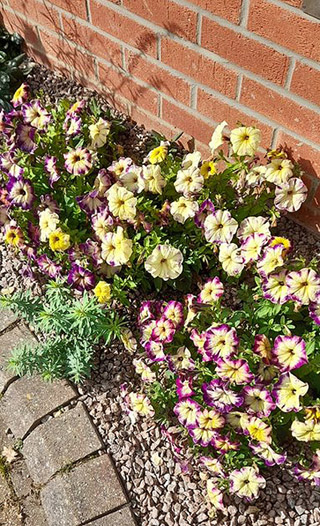
We spotted three Petunia plants in a nearby garden centre - variety Moonstruck - and we were struck by their unusual combination of vivid colours and also the slight variation in shades between the plants, which, as is often the case with petunias, spread themselves across the border as the summer progressed. They were the last three available of that variety, so we felt quite fortunate in getting them.
Some bright pink Antirrhinums (see below) also sold themselves to us - in the outside garden section at Morrisons - as they were not only brightly-coloured but also offered at a knock-down price.
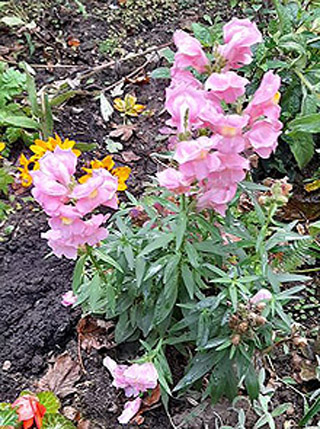
We snapped up a pair of these snapdragons and, ignoring the fact that people tend to regard them as rather commonplace, we found that they added an eye-catching highlight to our main border.
Our visit to Banham Zoo was rounded off by a quick peek in the sizeable gardening section, which we found on our way out. I must say that I was both impressed and surprised by the number and quality of unusual plants available. We could have filled the car boot with interesting specimens, but in the end went for two.
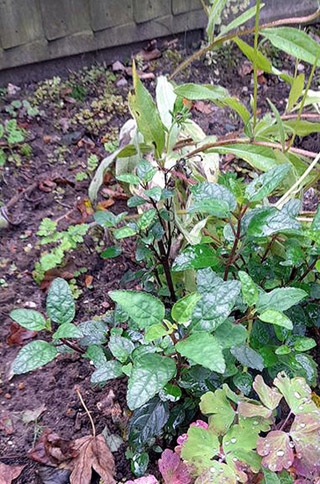
This Phygelius fuschia (above), a native of South Africa apparently, was festooned with hanging, bright red, tubular flowers when we came across it. Unfortunately, it shed its blooms very quickly after it was planted, but we'll look forward to seeing them again next year.
We bought this Mrs Popple fuschia (below) online, attracted by the promise of a plant with some height - about 3-4 feet, which would look about right next to one of our clematis.
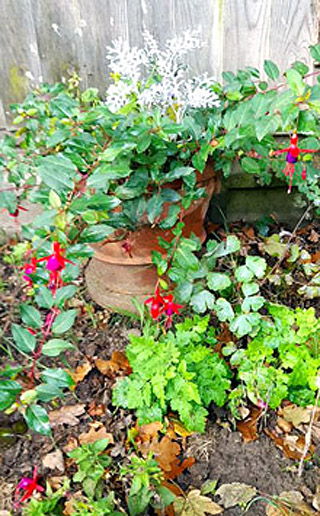
To my knowledge, it's not a variety we've grown before. So far the flowers are putting on a good display; but there's not much sign of height. Hopefully she'll begin to cast her eyes skyward next Spring ...
This Spiraea (below) has done really well, with its flattish heads of small pink flowers.
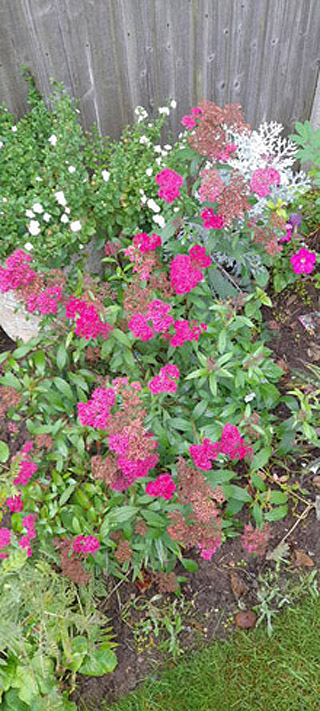
We have more than enough white flowers in the garden, so we're happy to have the pink variant rather than the white. Most experts suggest that they should be pruned straight after flowering; but opinion does seem divided as to the extent of pruning, from advising just to deadhead to cutting them right back to ground level. I'm inclined to take ours down to about six inches (15 cms in new money ...).
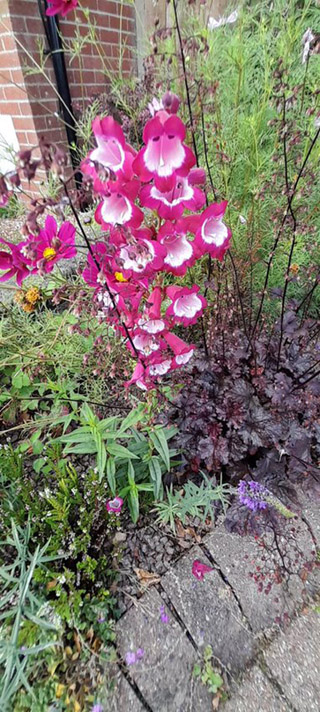
Our various new Penstemons (example above) will also need to be cut back - by about a third. Penstemons have been a particular favourite of mine for only about ten years, when I suddenly began to notice them. Prior to that, I was never really aware of them, other than by name.
This can happen: a plant that's quite popular can escape one's notice for years on end. But they were one of the first on my list when I began work on our new front borders last year.
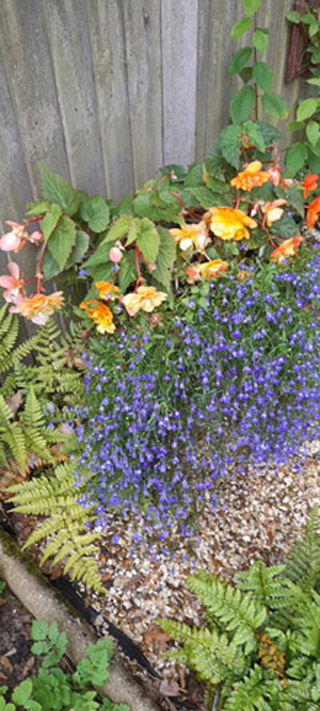
I'm so pleased with the contribution of these specific begonias, both around the garden and in our hanging baskets, that I'm going to break my normal habit and, rather than put them in the compost bin, I'll overwinter them in the greenhouse. And I'll definitely try to replicate this dazzling combo next year.
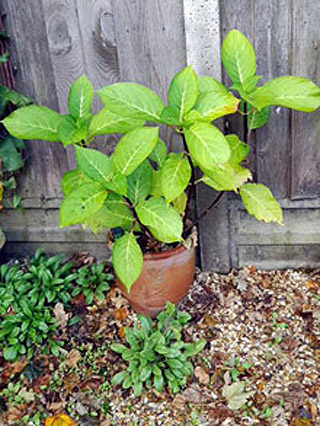
Hydrangeas are back in fashion, proclaim all the gardening writers. Ours is situated in a fairly shady spot, thought it does get decent sunshine for at least part of the day. We bought this one when it was in full bloom, with (unless my memory deceives me ...) quite large white panicles - the technical expression - of flowers which I can't wait to see reappear next Spring ...
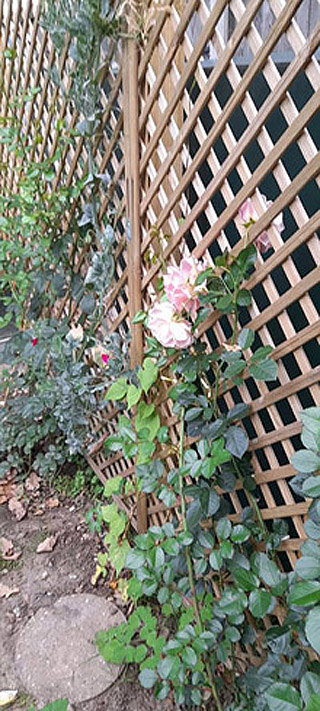
I wrote at length a while back about putting up our new trellis and planting the two award-winning Peach Melba climbing roses, which we selected primarily for their colour and height, aside from the obvious attraction of their being Rose of the Year 2023. Quite a few flowers blossomed during the summer just past, but the real show will no doubt get underway next year. Can't wait!
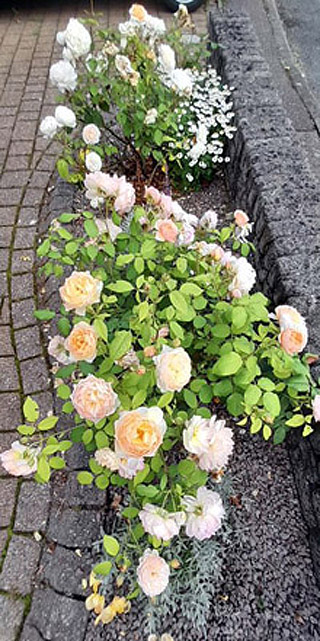
Our three shrub roses in the front border - detailed in my August-December, 2022 diary (see link below) - began blooming at full magnificence very early in the season.
Some of the flowers were so large and weighty that they were too heavy to be supported by their young, sappy stems. No doubt the branches will harden up by next Spring and the plants will gain in height and strength. The decision to go for a mix of apricot shades is one I haven't regretted.
The rose pictured below has followed us around for many years and been on the point of being thrown away on numerous occasions because it seems so reluctant to produce more than two or three flowers each summer.
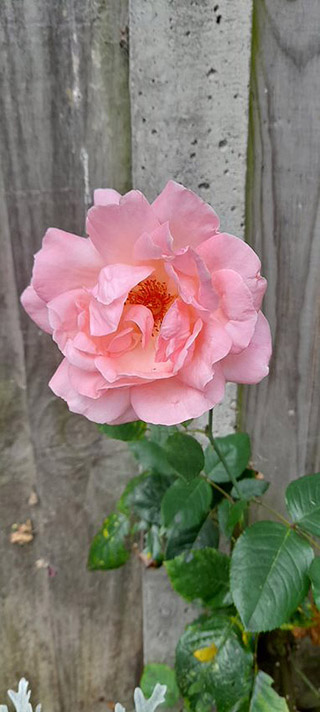
But ... the case for the defence is that it has never really been put in full sunshine and so maybe it deserves one last chance?
We're contemplating supporting it on an obelisk - but if it still under-performs, it will receive more than a harsh pruning next time around ... watch this space.
Our miniature roses too have tended to be disappointing in the past, though this year they did seem to make something of an effort. This may well be because I remembered to feed them regularly. Again, next year will be a time of reckoning.
One of the things that make gardening so interesting to me is the opportunity to experiment. I've had a number of experiments going on this past summer. I tried black tomatoes for the first time, another species variant which I didn't know existed. They were - and continue to be in late October - a great success!
The fruits start off with black tops and green undersides. It takes quite a time for the undersides to go first red, then eventually black. However, we found that they were perfectly edible, maybe with a slight tang, even when the undersides weren't entirely black. To my amazement, they were more productive than either the Sunrise or Gardener's Delight plants, which frankly didn't have a very good year.
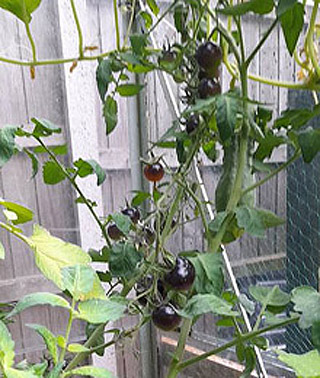
It may have been my imagination, but they also seemed a bit juicier. And the addition of another colour to a salad, alongside the reds and yellows, is of course a bonus. I'll definitely grow them again.
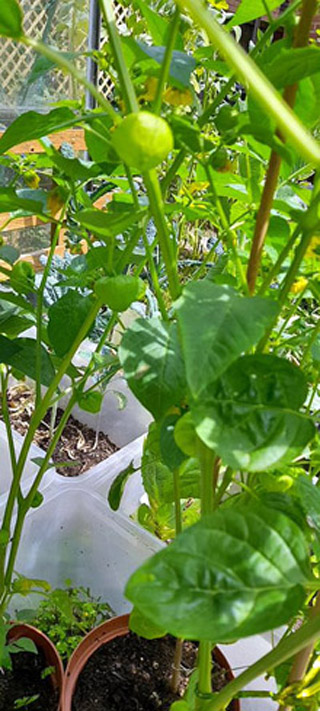
I'd never heard the name before, but decided to send off for them. I assumed that this was another example of a plant that everyone, apart from me, had known about for decades. So ... it was reassuring to watch Gardener's World on the BBC last week and see a Stockport restaurateur give a guided tour of his rooftop garden and make a point of referring to Tomatillos. Apparently the customers he takes up onto the roof are always intrigued by the tomatillos he grows and want to know more.
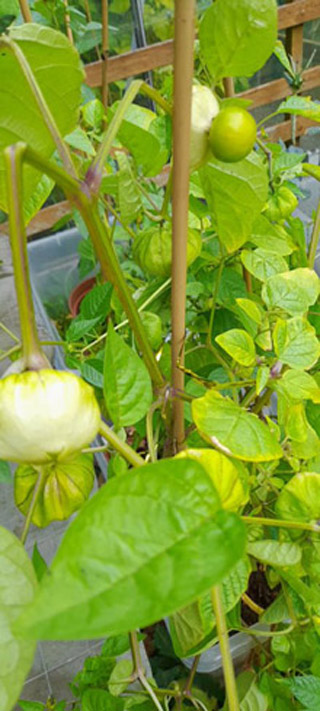
Once germinated, grown on to about six inches in height and planted out in the garden in around late April, they grew vigorously into substantial bushes and produced a large quantity of fruit. So I can now report that this experiment too was a great success! It must be said that the tomatillos, which bear a striking resemblance to green tomatoes, are rather strange, covered in a dry husk which eventually begins to crack and peel away.
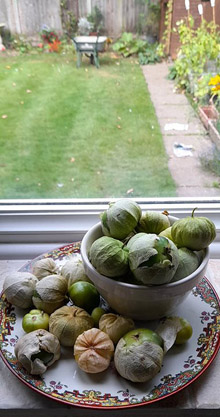
If left long enough, the fruits change from green to yellow. But perhaps the most noticeable characteristic is their stickiness, once the husk has been removed. They need to be washed, maybe with soapy water, and dried. Other than that, they're really no problem at all and add a pleasant, tangy zest to a stir-fry. (Although they're related closely to Chinese Lanterns, care should be taken not to confuse them, as the fruits of Chinese Lanterns are poisonous).
They're very unusual but I was pleasantly surprised by the success of this experiment.
I also grew a single butternut squash plant. We'd only noticed butternut squashes in the supermarket for the first time in the past couple of years, and have been using them in stews in our slow cooker.
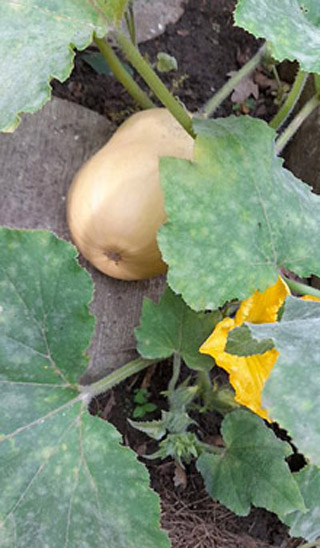
So when I saw them for sale in the garden centre I decided to just buy one and give it a whirl. The result was two quite sizeable squashes. They're both still as hard as a rock, like the ones we've purchased, so obviously they will keep for a long time. The plant tried to produce more squashes but I think it suffered from poor pollination. Given the amount of space it took up in our bijou veg patch, I probably won't grow them again. But I might ...
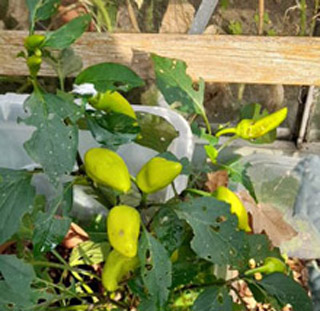
I also grew chilis for the first time. I've grown 'exotics' like peppers, aubergines, asparagus and artichokes - but never chilis. I've been growing them both in the greenhouse and in the veg patch. They're something different, another candidate for stir-fries and well worth the effort, turning red fairly readily once brought into the house and plonked on the windowsill.
In other news ... my cucumbers have done quite well, though there were some weird bulbous shapes and some with prickles. I've had prickly cucumbers before but I didn't expect the standard Telegraph variety to produce prickles. Errors in the packeting process, maybe?
Ah yes - the shed. Or more specifically, shed number 2. You may recall that I covered my refurbishment of shed number 1 in my last garden diary.
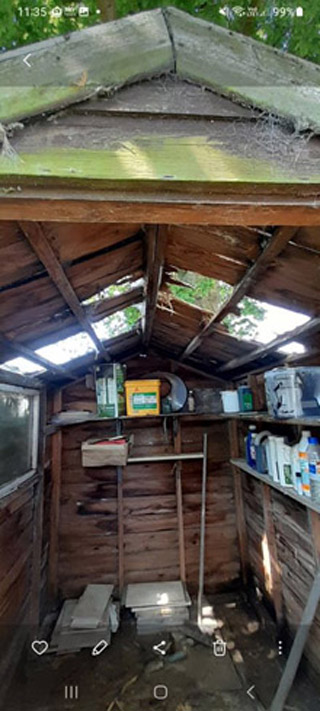
The problems with number 2 were of a different order, with a roof that had rotted in many areas and a floor that was almost completely rotten. Despite this, attracted by the challenge and the opportunity to save money in equal measure, I decided to give it a go ...
I soon rejected any notion of replacing the apex beam and simply replacing the existing transverse rafters. The long middle beam was too decayed and fragile.
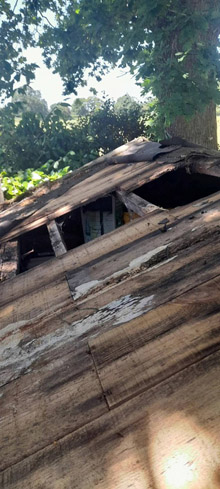
Instead I used timbers laid end-to-end. This simplified matters and utilised the greater strength of the end walls of the little building, whilst also taking advantage of support from the minority of roof beams that weren't rotted.
One inconvenience was the impossibility of getting round the back of the shed, as the gap was too narrow.
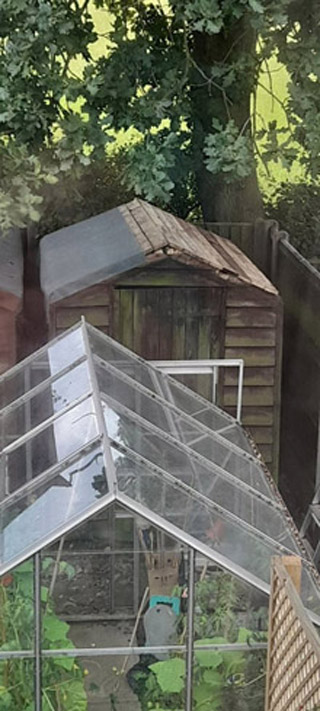
So, each time I was ready to attach a group of planks, I had to spend 2-3 minutes hiking around to the lane at the back of the property in order to lean over the fence! (I did get some suspicious looks from passers-by who saw me carrying a hammer and then diving into a hole in the hedge ...). I finished off the roof by adding a new fascia piece to the side and a finial which matched the one on shed number 1.
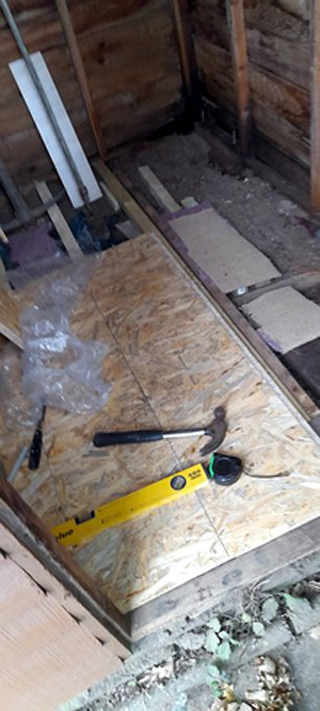
Although the floor was rotten, previous owners had clearly tried very hard to keep it usable by nailing layers of bits of wood to the joists, often with very long nails. A pick-axe isn't often thought of as a carpentry tool, but in this case it was extremely useful!
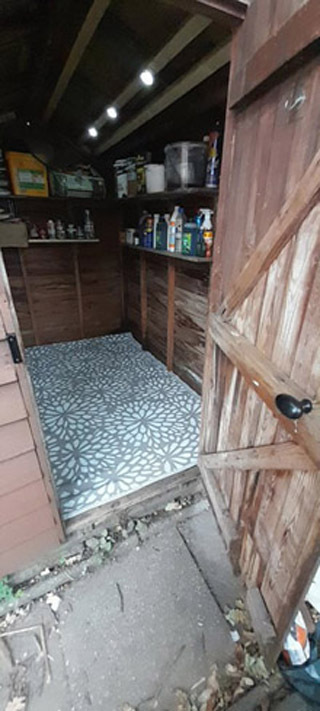
Once the floor area was adequately cleared, I began laying down and wedging new joists and filling the gaps between them with supporting pieces of timber and bits of old carpet, taking care to bring the support materials up to the required level to avoid any "give".
I also added an insulation layer in the form of black plastic bin-bags.
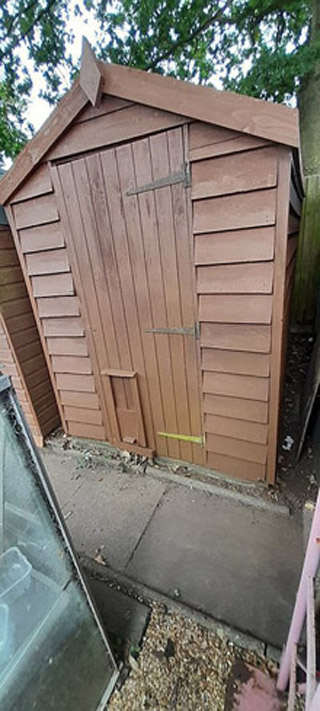
The actual floor level consists of loft flooring panels.
I discovered that the very act of joining the panels together made the overall structure of the floor more stable. In other words, the floor area ended up tailored to fit exactly into the space available and thereby became very solid.
We found a hard-wearing rug in the garden centre that fitted the dimensions of the shed exactly. All that was left to do was to add a set of stick-on, battery-powered lights and paint the shed using the same paint as that used on shed number 1.
Job done!
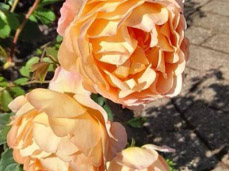
The roses that I planted late last year - Grace, The Lady Gardener and The Lady of Shallot (see my August-December, 2022 diary) - have all come good.
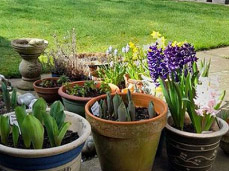
This wet, cold and grudging handover from Winter to Spring has shown only fleeting signs of a settled warm spell as we reach the end of April.

The second half of the year 2022 has been a time of experimentation - some intentional, some forced on me by nature!
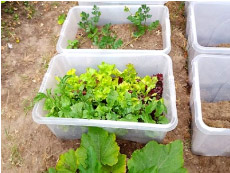
July, 2022, will be remembered as a month of record-breaking high temperatures. But for how long? When will the next record-breaking heatwave arrive?
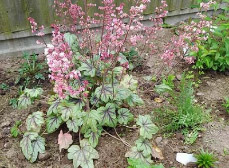
We moved into our new house on January 21st. The quite small garden at the back was about as plain as it's possible to be - just a lawned area, a greenhouse, patio and a couple of sheds.